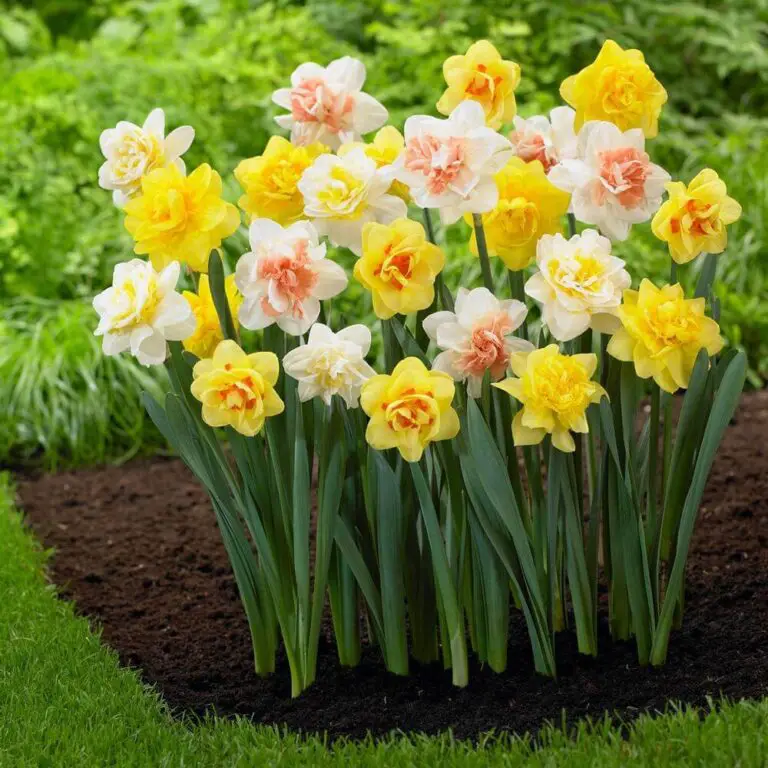15+ Best Bushes To Plant In Front Of Your House: 2024 Guide
When it comes to selecting the perfect bushes for your front yard, there’s more to consider than just their aesthetic appeal. The right choice can boost your home’s value, improve its curb appeal, and even enhance the overall ambiance of your outdoor space. To make an informed decision, think about what kind of environment your chosen bushes will thrive in. Are they adapted to full sun or partial shade? Do they require frequent pruning or can they coast with minimal maintenance?
And how will they complement the existing design elements of your home and surrounding landscape? In this article, we’ll explore the key factors to consider when choosing the best bushes for your front yard. From climate and hardiness zone to sunlight and water requirements, maintenance levels, growth habits, and more, we’ll dive into the details that will help you make an informed decision.
With a little guidance, you can transform your front yard into a stunning oasis that showcases your unique style and adds significant value to your property.
Factors to Consider When Choosing Bushes
When selecting bushes for your outdoor space, it’s crucial to consider the local climate and hardiness zone. This ensures that the plants are well-suited to thrive in the specific weather conditions, whether that’s scorching summers or frosty winters. A plant that’s adapted to a mild climate won’t fare well in an area with extreme temperatures. Similarly, don’t expect a bush that prefers hot weather to tolerate cold snaps.
In addition to climate and hardiness, it’s essential to consider the sunlight and water requirements of your bushes. Some plants are sun-lovers, while others prefer shade. When it comes to water, some bushes are low-maintenance, requiring just a gentle soaking, while others may need more frequent hydration. Matching these needs to what you can provide is vital for keeping your bushes healthy and thriving. Another crucial factor to consider is maintenance levels.
Do you want a bush that’s self-reliant or one that requires regular pruning and care? If you’re short on time or not keen on yard work, choose a bush that’s more laid-back. On the other hand, if you enjoy gardening and don’t mind putting in some effort, opt for a bush that needs a bit more TLC. Finally, think about the growth patterns of your bushes and how much space they’ll need to spread out.
A bush that grows rapidly can quickly become too big for its surroundings, blocking windows or cramping doorways. By understanding their growth habits and giving them the space they need, you’ll avoid any potential headaches later on.
Best Bushes To Plant In Front Your House
Boxwood (Buxus spp.): Ideal for Structured Designs, Low Maintenance

Boxwood (Buxus spp.) is the ultimate low-maintenance shrub for adding neat, green borders to your yard without requiring too much TLC. This adaptable plant thrives in USDA Hardiness Zones 4-9 and can tolerate a range of light conditions from full sun to partial shade. When it comes to soil, boxwoods are surprisingly flexible, doing well in well-drained conditions and adapting to most soil types.
When the temperature rises, these shrubs need moderate watering to keep the soil hydrated without becoming waterlogged. And when it comes to size, boxwoods grow 2-12 feet tall and 2-8 feet wide, making them a great option for hedges or borders.
In terms of deer resistance, boxwoods earn high marks with their ability to fend off these pesky critters.
With minimal upkeep required, including regular snipping and trimming to maintain shape, boxwoods are the perfect choice for busy gardeners looking for a reliable and attractive addition to their outdoor space.
Hydrangea (Hydrangea spp.): Offers Beautiful Blooms and Shade Tolerance

Hydrangeas, with their vibrant blooms that can brighten up any shaded area, are undoubtedly the stars of the gardening world. While they thrive in the spotlight, they’re also happy to perform well in the shadows. To bring out their full potential, provide them with rich, moist soil that drains well and consistent watering. This will encourage them to put on a spectacular display of color that’s sure to impress.
With proper care, hydrangeas can grow up to 15 feet tall and wide, making them a stunning addition to any garden. However, they do have some specific needs to keep in mind. For starters, they require high levels of moisture but can’t tolerate waterlogged soil – think of it as needing a good drink during dry spells, rather than a swimming pool. Additionally, regular pruning is essential to keep them looking their best.
Cut back the old flowers and dead branches after they’ve finished blooming to encourage new growth and prepare the plant for another show-stopping performance next year.
Azalea (Rhododendron spp.): Bright Spring Flowers and Evergreen Options

Azaleas, a type of Rhododendron, are the star attractions of spring gardens, boasting vibrant flowers that illuminate even the shadiest of spots. These flowering shrubs are surprisingly adaptable, coming in both deciduous and evergreen varieties to suit any garden style. One thing’s for sure: they thrive in acidic soil with good drainage – think of a coffee connoisseur’s perfect brew, but for soil.
When it comes to care, azaleas are like the ideal drinking buddy: not too demanding, but precise about their moisture levels. They prefer consistent watering, avoiding waterlogged soil that can lead to unhappy roots. Adding a layer of mulch helps regulate their root temperature and keeps them content. To keep them looking their best, prune immediately after blooming to encourage tidy growth and prepare for next year’s display.
Forsythia: Early Spring Bloomers, Vibrant Yellow Flowers
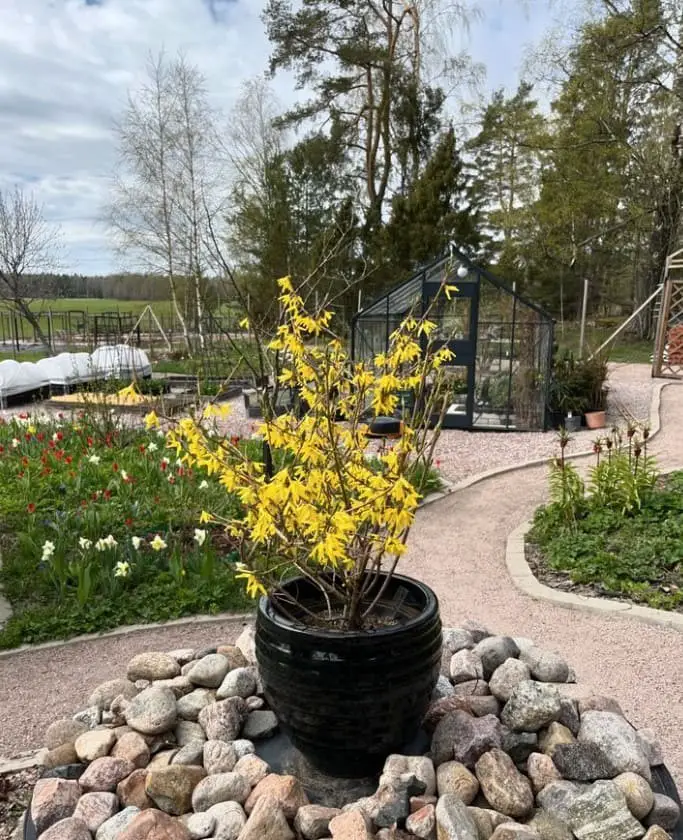
As the last wisps of winter dissipate, Forsythia bushes burst forth with vibrant yellow blooms, signaling the arrival of spring’s warmth. These early risers thrive in USDA Hardiness Zones 5 to 8, where they can soak up full sun to partial shade. They’re not picky about soil conditions, as long as it drains well and provides moderate watering. Forsythias are surprisingly easy-going when it comes to maintenance.
A spot with plenty of sunlight will reward you with a dazzling display of yellow flowers each spring. During the initial growing season, provide regular waterings to help them establish a strong root system. Once settled, they’re remarkably drought-tolerant. To keep your Forsythia looking its best, trim it back after it blooms to prevent any unwanted tangling or overgrowth. With this simple care routine, you’ll be enjoying the sunshine and warmth of spring for years to come.
Lilac (Syringa spp.): Fragrant Flowers in Late Spring
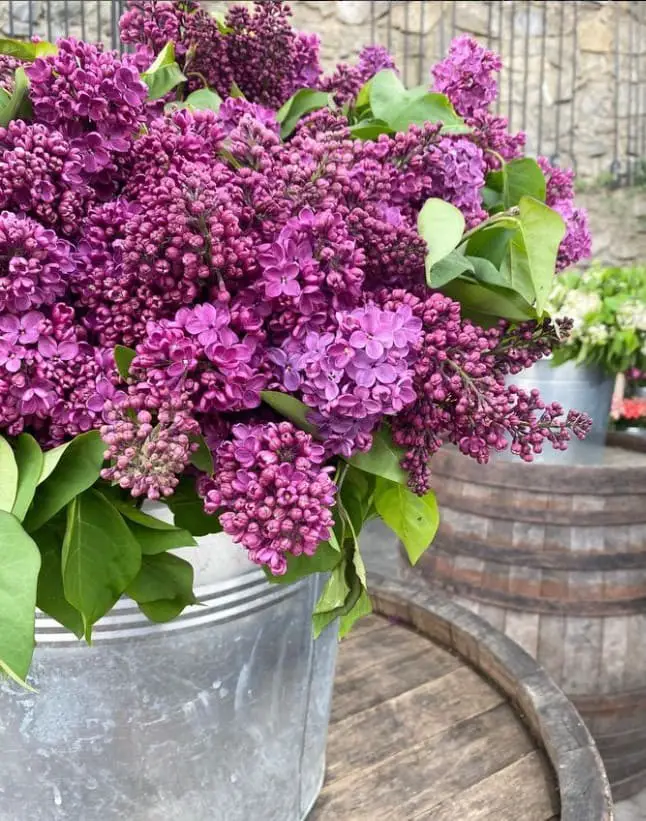
Lilacs are a nostalgic treat that transports us back to a simpler time with their intoxicating fragrance filling the air in late spring. These stunning bushes steal the show when they bloom, captivating both the eyes and noses of those who pass by. With a kaleidoscope of colors ranging from rich purples to soft pinks and crisp whites, lilacs are an excellent choice for any garden backdrop.
To ensure your lilacs thrive, plant them in a spot that receives at least 6 hours of direct sunlight daily – they’re sun-loving through and through. As for soil, they’re relatively flexible as long as it drains well and doesn’t retain too much water. When it comes to watering, aim for regular but not excessive moisture; lilacs don’t appreciate soggy soil.
After the blooms have faded, trim the spent flowers and shape the bush to encourage healthy growth and a spectacular display for next year’s show.
Japanese Maple (Acer palmatum): Striking Foliage, Variety of Sizes

Japanese Maples, also known as Acer palmatum, boast an impressive array of features that make them a standout addition to any garden. With a USDA Hardiness Zone range of 5 to 8, these trees are perfectly suited for temperate climates. The leaves themselves are the true stars of the show, with varieties offering stunning shades of red, purple, and green. While they do require partial shade, especially in warmer regions, they’ll reward you with vibrant colors that change with the seasons.
From a design perspective, Japanese Maples offer unparalleled versatility, ranging from 10 to 25 feet tall and boasting unique shapes that can be tailored to fit even the smallest of garden nooks or grandest of landscapes. And when it comes to deer resistance, they’re surprisingly resilient, making them an excellent choice for gardens with wildlife concerns. To keep your Japanese Maple thriving, remember to provide slightly acidic, well-drained soil and consistent moisture levels.
Avoid overwatering, as this can lead to poor growth. If you want to take your tree’s beauty to the next level, consider pruning in late summer or early fall to maintain its shape and encourage healthy leaf production. While they may require a bit more TLC than other plants, the breathtaking views they offer year-round make them well worth the extra effort.
Spirea: Season-Long Interest with Minimal Care
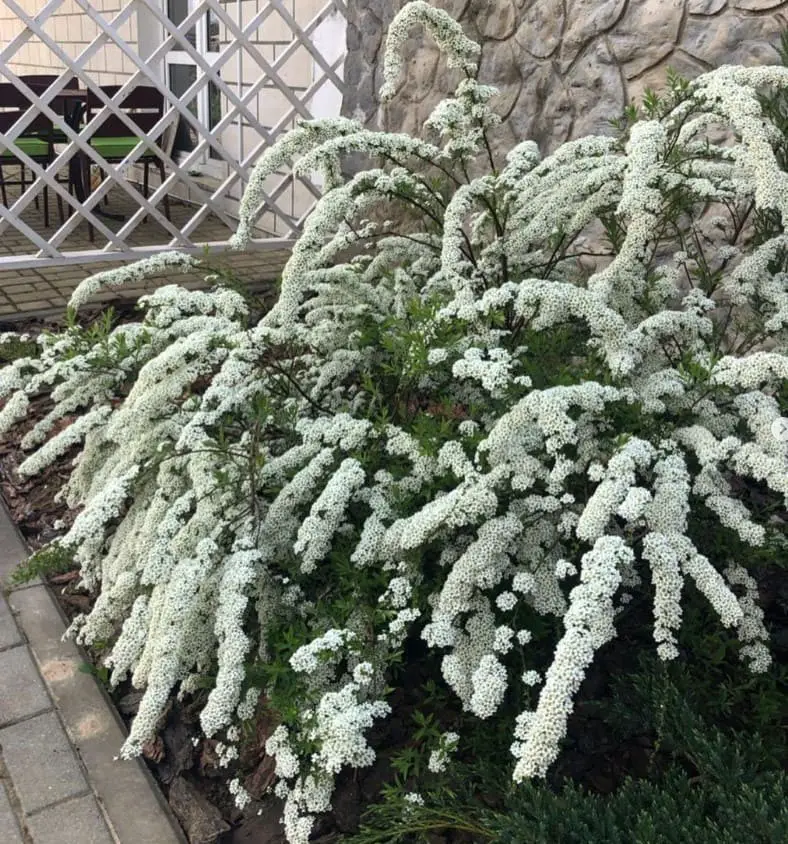
Spirea is the epitome of low-maintenance gardening, offering vibrant pink or white blooms throughout the seasons without requiring excessive care. This versatile bush thrives in a variety of settings, from borders and beds to container gardens, making it an ideal choice for gardeners seeking a statement piece with minimal fuss.
One of its greatest strengths lies in its adaptability: it flourishes in full sun but can also tolerate partial shade, while its well-drained soil preferences make it accessible to a wide range of garden conditions. Watering is straightforward – moderate levels are sufficient, and established plants can even withstand brief droughts.
To keep your Spirea looking its best, simply trim the spent blooms after they’ve finished flowering, which will not only encourage reblooming but also help maintain a neat, compact shape.
Witch Hazel (Hamamelis virginiana): Unique Winter Blooms
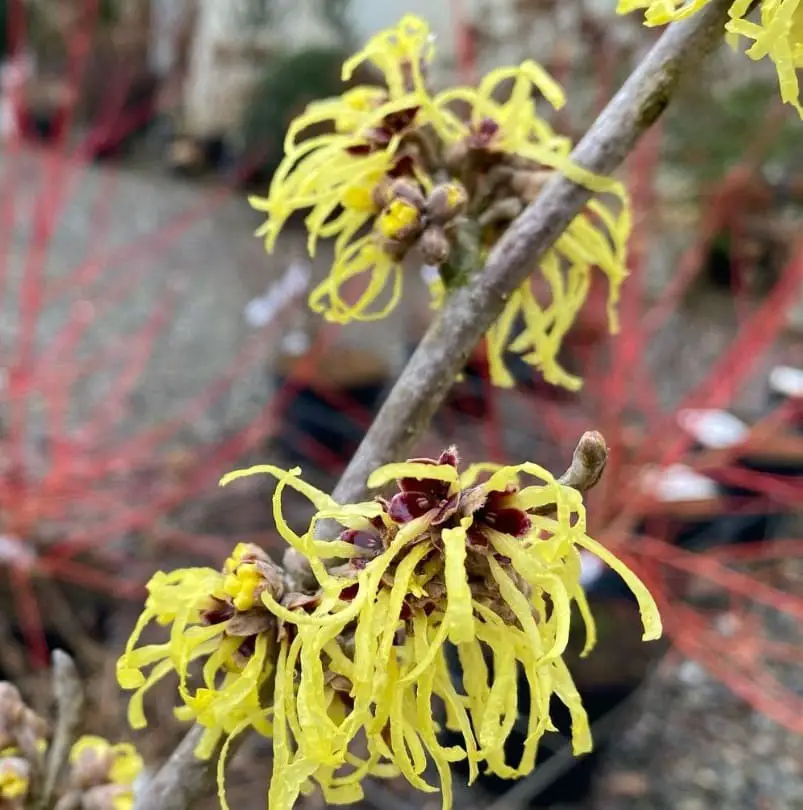
Witch Hazel (Hamamelis virginiana) is a standout winter performer, boasting vibrant yellow flowers that brighten up even the chilliest landscapes. This deciduous shrub thrives in USDA Hardiness Zones 3 to 8, where it can grow 15-20 feet tall and wide. When it comes to care, Witch Hazel appreciates full sun but tolerates partial shade in hotter regions. It prefers well-drained soil with a slightly acidic to neutral pH.
Moderate watering helps the plant establish itself quickly, especially when young. Pruning is minimal; simply tidy up any stray branches in early spring if necessary. As one of the few plants that shines during the winter months, Witch Hazel is an excellent choice for adding visual interest and creating natural privacy screens.
Holly (Ilex spp.): Evergreen, with Berries for Winter Interest
Holly (Ilex spp.) is a highly versatile evergreen that offers year-round foliage and an added splash of color during the winter months with its vibrant berry display. This robust plant comes in a range of sizes, from compact shrubs to towering trees, making it an excellent choice for gardeners seeking to add depth and visual interest to their outdoor spaces.
When it comes to growing conditions, Holly plants generally prefer full sun to partial shade, as well as well-drained soil with a slightly acidic pH. Consistent moisture is also essential, particularly in dry environments, to keep the plant healthy and stress-free. In terms of maintenance, pruning should be performed during the winter or early spring to maintain shape and encourage new growth.
It’s worth noting that Holly plants are dioecious, meaning they require both male and female plants to produce berries. For gardeners looking to create a stunning display, this may mean planting multiple specimens to ensure a balanced sex ratio.
Rhododendron: Large Blooms, Variety of Colors
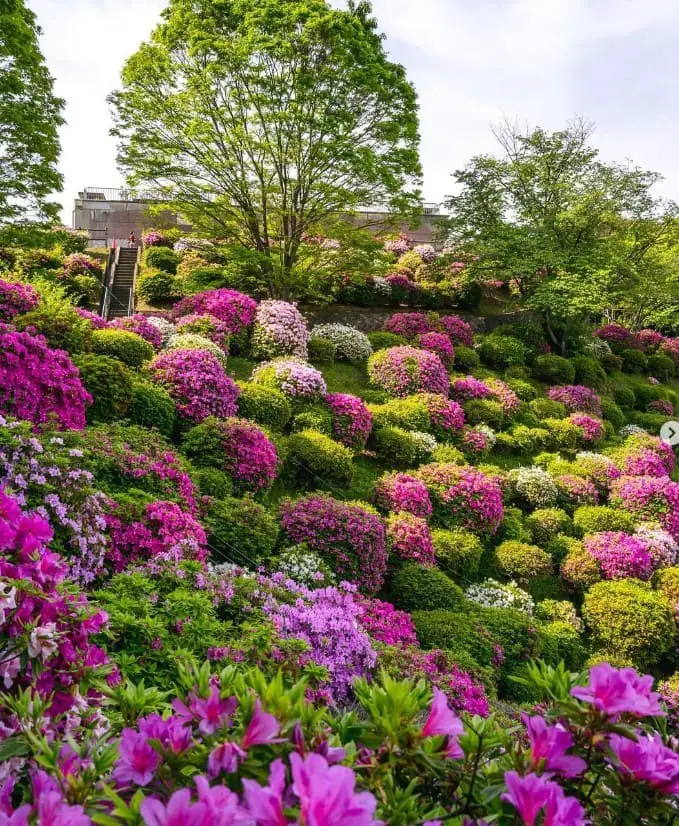
Rhododendrons, found on Instagram @man_tac, boast an array of striking colors – white, pink, red, purple, and yellow. With a USDA Hardiness Zones rating of 4-8, these shrubs thrive in partial shade and well-drained, acidic soil. They also require moderate to high water levels and can grow up to 2-25 ft. tall and wide, making them somewhat deer resistant.
These flowering wonders are a favorite among gardeners for their vibrant displays, which can be enjoyed in shaded areas where other plants may struggle to survive. Their adaptability and beauty make them an excellent choice for adding color and depth to the garden.
To care for Rhododendrons, provide them with a sheltered spot that receives dappled shade, avoiding intense afternoon sun that can damage their leaves.
Acidic, well-drained soil kept consistently moist is ideal, with mulching helping retain moisture and keeping roots cool. Regular watering during dry periods ensures optimal growth, especially when blooming. Pruning is rarely necessary but should be done immediately after flowering to allow for the next season’s buds to form.
Rose Bushes (Rosa spp.): Classic Beauty, Requires More Care
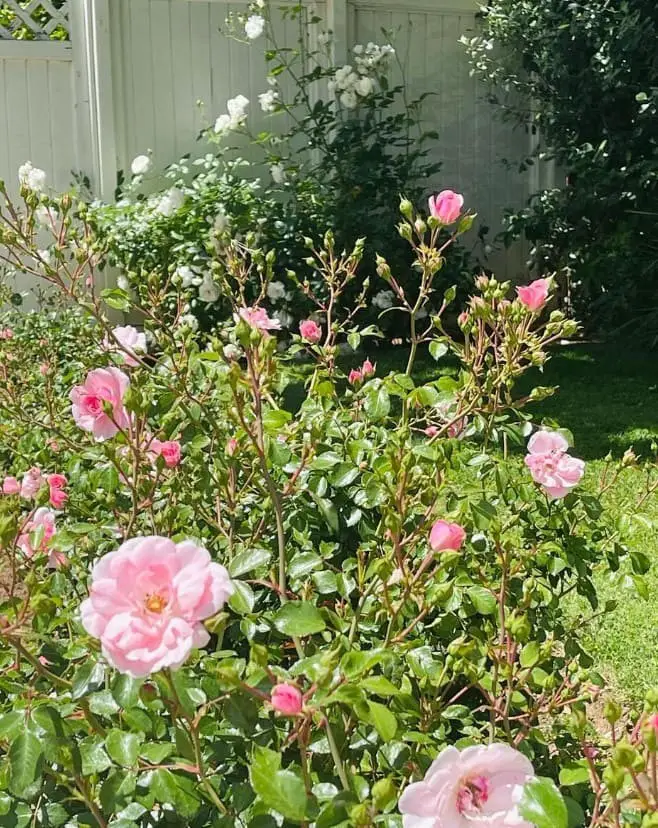
Rose bushes (Rosa spp.) are a timeless classic in any garden, renowned for their breathtaking flowers and alluring scents. With a stunning array of colors and styles to choose from, it’s no wonder why they’re a favorite among both novice and experienced gardeners seeking to infuse their outdoor spaces with elegance. Despite their versatility, these beautiful plants share some fundamental requirements to thrive.
For instance, they demand full sun, requiring at least six hours of direct sunlight daily to reach their full potential. A well-drained, fertile soil is also essential, accompanied by regular feeding with rose-specific fertilizers to encourage robust growth and an abundance of blooms. Consistent moisture is crucial, particularly during dry spells, to keep the soil neither too wet nor too dry.
Lastly, pruning is vital for both aesthetic appeal and plant health; removing dead or weak branches in early spring and deadheading spent blooms during the flowering season will not only promote further blooming but also maintain the overall shape and vitality of your rose bushes.
Lavender (Lavandula spp.): Fragrant and Drought-Resistant
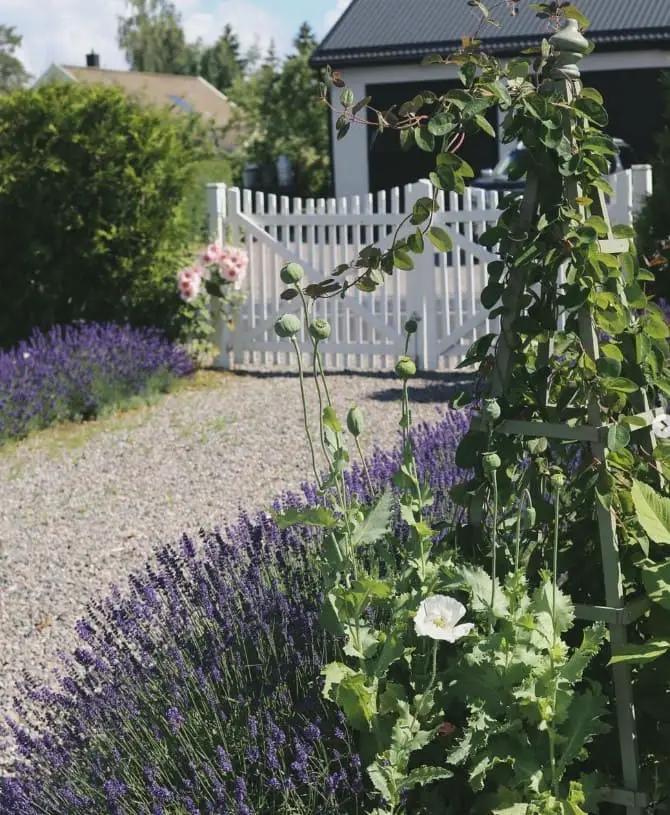
Instagram: @beatanison. Lavender (Lavandula spp.) is a prized possession for many gardeners, renowned for its calming aroma and stunning, dainty flowers. This adaptable plant flourishes in USDA Hardiness Zones 5 to 9, where it can thrive in conditions ranging from full sun to partial shade.
Its silvery-green foliage provides a beautiful backdrop for the vibrant blooms that typically range in color from purple to blue, white, and pink.
With its low watering needs, lavender is an excellent choice for gardeners seeking to reduce their water consumption or those living in arid regions.
To cultivate this resilient plant, provide it with well-drained soil of moderate fertility and a pH level that leans slightly alkaline. Lavender does not tolerate overwatering; therefore, avoid excessive moisture by ensuring the soil drains freely.
Once established, lavender requires minimal watering, making it an attractive option for those seeking low-maintenance gardening. Regular pruning in early spring or following flowering helps maintain its shape and promotes healthy growth, guaranteeing a bountiful display of blooms year after year.
Barberry (Berberis spp.): Vibrant Foliage, Thorny Deterrent for Animals
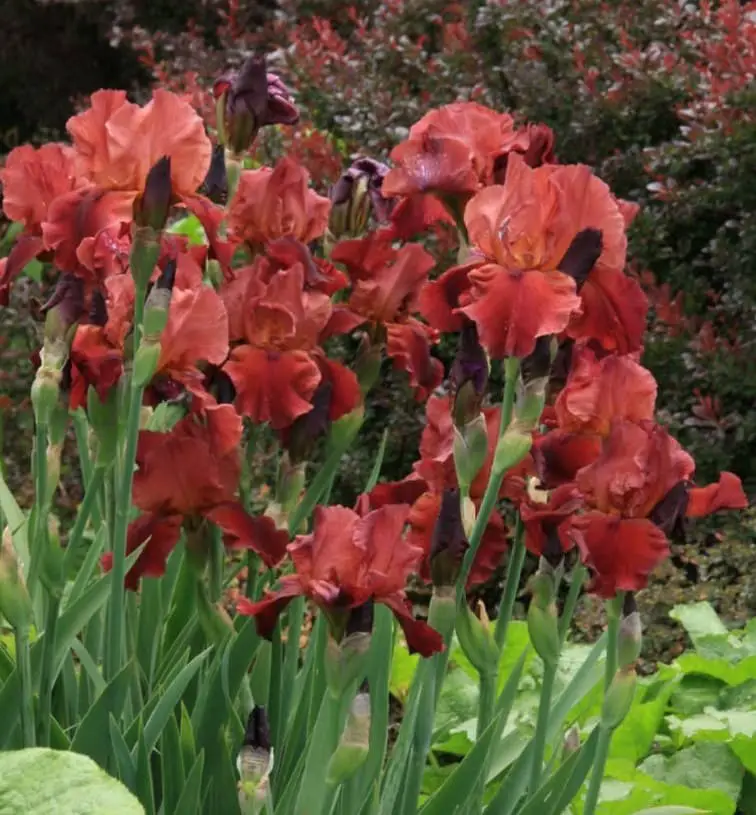
Camilliabloomsbury’s Instagram-worthy Barberry plants (@camilliabloomsbury) boast a range of foliage colors, from vibrant reds and oranges to sunny yellows and greens, making them a standout feature in any landscape design. The plant’s unique characteristic lies in its ability to thrive in full sun to partial shade, with well-drained soil being the key to success. Its low water requirement means it can tolerate drought conditions once established, needing only occasional hydration.
Annual pruning is essential to maintain the plant’s shape and encourage new growth, but be sure to wear gloves when handling as those thorns are quite formidable. With deer resistance high due to its prickly stems, Barberry makes a fantastic choice for gardeners seeking a low-maintenance yet striking addition to their outdoor space.
Juniper (Juniperus spp.): Drought-Resistant and Good for Ground Cover
Juniper (Juniperus spp.) excels as a versatile evergreen, providing year-round foliage that can thrive both as a low-growing ground cover and as a tall tree. Its remarkable drought resistance and adaptability to poor soils make it an ideal choice for landscapes seeking low-maintenance greenery. In terms of care, Junipers require full sun and well-drained soil to flourish. Once established, they exhibit impressive drought tolerance, needing minimal watering.
Occasional trimming can help maintain their shape and prevent woody growth. As a general rule, Junipers are pest-free, but it’s still important to monitor for signs of fungal diseases, particularly in humid climates.
Dwarf Alberta Spruce (Picea glauca ‘Conica’): Small and Cone-Shaped, Perfect for Tight Spaces
The Dwarf Alberta Spruce (Picea glauca ‘Conica’) boasts a unique combination of characteristics that make it an excellent choice for small gardens or as a specimen plant. Its compact, cone-shaped form stands out in both formal and informal landscapes.
This evergreen’s dense, bright green foliage and slow growth rate make it a popular selection among gardeners. It flourishes in full sun to partial shade, with moist, well-drained soil being its ideal environment.
Regular watering is crucial, particularly during dry periods, to maintain the perfect level of moisture.
To keep this shrub looking its best, annual feeding with an evergreen-specific fertilizer is recommended. Pruning is generally not necessary, except to remove any brown or damaged branches that may be detracting from the plant’s overall appearance and health.
Design Tips for Arranging Bushes in Front of Your House
When designing the landscape of your property, three fundamental principles can guide you in creating an aesthetically pleasing and harmonious outdoor space: balance, focus, and contrast. These principles are essential in striking a chord between formality and naturalness, allowing you to curate a unique visual identity for your home. Balance is achieved by skillfully arranging bushes and plants to create either symmetrical or asymmetrical equilibrium.
Symmetry often yields a more formal landscape, whereas asymmetry offers a casual and organic appearance. This principle is particularly important in achieving visual harmony between different elements of the landscape. Focus refers to drawing attention to specific parts of your landscape. This can be achieved by highlighting unique plants, colorful bushes, or even a series of shrubs that lead the eye towards the front door or an attractive window.
The goal is to use plants as focal points that capture and direct attention within the garden. Contrast, on the other hand, adds depth and interest to your landscape through varying textures, colors, and shapes. For instance, pairing a soft-textured, silver-leaved bush with a rough, dark green conifer can highlight their distinct features. Similarly, contrasting colors can make each plant stand out more vividly.
To effectively arrange bushes for maximum curb appeal, consider the following practical tips:Entrance Framing: Plant bushes to frame your home’s entrance, guiding the eye and path towards the main doorway. This can create a welcoming atmosphere. Layering: Create depth by planting bushes of varying heights and sizes. Start with taller bushes in the back and progress to medium and shorter ones towards the front. This layering effect adds richness and fullness to your landscape.
Repetition: Repeat similar plants and colors to create a cohesive look, without sacrificing variety. This can tie different areas together visually. Year-Round Interest: Select a mix of deciduous and evergreen bushes to ensure that your front yard remains attractive throughout the year. Consider bushes with colorful berries, interesting bark, or fall color to extend the seasons of interest. Spacing and Proportion: Be mindful of the mature size of bushes to avoid overcrowding.
Proper spacing allows each plant enough room to grow to its full potential without being stifled by its neighbors. Complementary Colors: Choose bushes that have complementary colors to your home’s exterior, such as warm-toned houses paired with cool-colored bushes for a striking contrast. Maintenance Accessibility: Ensure there is sufficient space between your home and the bushes to allow for easy maintenance. This will help keep both the building and plants healthy.
Maintenance Tips for Keeping Your Bushes Healthy
To keep your bushes thriving, regular maintenance is crucial. Let’s explore essential aspects such as pruning techniques, fertilization and watering schedules, and pest and disease management. Pruning plays a vital role in maintaining shape, size, and overall health of your bushes, while also encouraging healthy growth and flowering. Here are some key takeaways:Timing: Prune flowering bushes immediately after blooms fade to avoid cutting off next year’s blossoms.
Non-flowering, evergreen bushes should be pruned in late winter or early spring before new growth starts. Tools: Use sharp, clean pruning shears, loppers, or a pruning saw depending on the thickness of branches. Clean tools between cuts, especially when dealing with diseased plants. Technique: Always cut back to a live stem or bud pointing in the direction you want the bush to grow. This directs growth outward, improving air circulation and shape.
Older, overgrown bushes may benefit from rejuvenation pruning, cutting the plant back to 6-12 inches above ground to encourage new growth. Fertilization and WateringProviding the right balance of nutrients and adequate water is key to healthy, robust bushes. Apply a balanced, slow-release fertilizer in early spring to kickstart growth. Read product labels for specific application rates and timing. Some flowering bushes may benefit from higher phosphorus levels to encourage blooms.
Water newly planted bushes regularly to establish roots. Once established, most thrive on consistent, moderate watering schedules. Water deeply once a week rather than little every day to encourage deep root growth. Drip irrigation systems or soaker hoses minimize water waste and keep foliage dry, preventing disease. Pest and Disease ControlProactive management strategies are crucial for keeping bushes healthy.
Regularly inspect your plants for signs of pests or disease, such as discolored leaves, wilting, or unusual spots. Early detection is key to effective management. Use integrated pest management (IPM) methods that combine cultural, physical, biological, and chemical approaches. For example, encourage beneficial insects that prey on harmful pests to reduce chemical interventions. Ensure good air circulation by spacing plants properly and pruning regularly.
Remove fallen debris and dead plant material, which can harbor pests and diseases. In cases of pest or disease infestations, use fungicides and insecticides sparingly as a last resort. Choose products specific to the problem and follow manufacturer instructions carefully.




